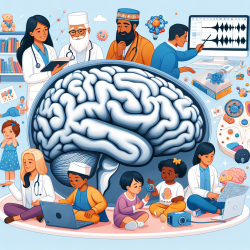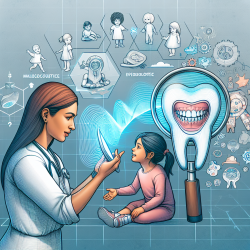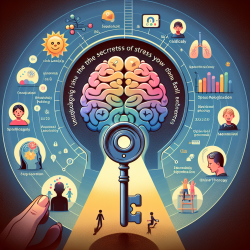Understanding Developmental Coordination Disorder (DCD)
Developmental Coordination Disorder (DCD) is a condition affecting 5-6% of children, characterized by motor impairments that interfere with daily activities and academic performance. Despite its prevalence, the underlying causes of DCD remain largely unexplored, posing challenges for intervention strategies.
The Role of White Matter Microstructure
Recent research has begun to shed light on the neural substrates of DCD, particularly through the study of white matter microstructure using Diffusion Tensor Imaging (DTI). This imaging technique provides insights into the brain's wiring, offering a window into the axonal development that may be disrupted in DCD.
Key Findings from Recent Research
A study published in JAMA Network Open explored differences in white matter microstructure between children with and without DCD. The study revealed significant differences in the fractional anisotropy and axial diffusivity of white matter pathways associated with motor and sensorimotor processing. These findings suggest that DCD involves altered brain development, challenging the notion that it merely represents the lower end of typical motor skill ability.
Implications for Practitioners
For practitioners working with children with DCD, these findings emphasize the importance of considering neural development in intervention strategies. Here are a few ways practitioners can integrate these insights:
- Incorporate Neuroimaging Insights: Understanding the neural underpinnings of DCD can inform more targeted therapeutic approaches. Practitioners might consider advocating for neuroimaging assessments to better understand individual cases.
- Focus on Sensorimotor Pathways: Interventions that specifically target the development of sensorimotor pathways could be more effective. This might include exercises that enhance coordination and motor planning.
- Encourage Further Research: Practitioners should stay abreast of ongoing research in this area, as new findings could lead to more refined intervention strategies.
Encouraging Further Research
While the study provides valuable insights, it also highlights the need for further research to fully understand the neural mechanisms underlying DCD. Practitioners are encouraged to engage with ongoing research efforts, perhaps even collaborating with researchers to explore new intervention strategies.
To read the original research paper, please follow this link: Differences in White Matter Microstructure Among Children With Developmental Coordination Disorder.










